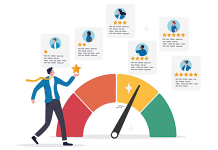Since entire workforces have moved to remote offices, some companies have implemented various software programs that closely track employee productivity and time spent on tasks. Proponents argue these systems help workers who may struggle to focus in a work-from-home environment stay on task and even increase productivity from their days in the office.
James Jason, assistant HR manager at Mitrade, an Australian-based broker that focuses on online foreign exchange and contract for difference (CFD) trading services, argues the remote tracking software they implemented helps its employees avoid the “always on the job” problem that has been a consequence for some workers now that their home doubles as their office.
“We are very strict with the signing out part since we do not want them overworking. In fact, we have come up with rewards for those who stick to the work schedule that we have carefully put together to ensure no one is working when they should not,” Jason says.
At the same time, Jason states that the tracking software ensures that a worker resists the temptation to take a break and a five-minute walk during work hours. A client may request assistance from an employee who went for a walk and fail to get it. “Five minutes is enough to deny us business worth thousands. Therefore, we only use the software to make sure that if you are required to be working between 9 and 5, you are actually there,” he says.
Others view software that monitors employees’ time on task as Big Brotherish. One risk is that it signals a lack of trust in employees. Laura Vanderkam, a consultant on time management and productivity, and the author of “The New Corner Office: How the Most Successful People Work From Home,” is a proponent of time management software as a means for individuals to improve their own skills in that area. She is not a fan of using time tracking software to manage and monitor employees.
“We can learn all sorts of things when we see the data in black and white. However, I think this is best used as individual motivation,” Vanderkam says. “I don’t recommend software that reports activities to managers as a form of tracking employees’ work. This is kind of a lazy approach to management — trying to recreate the face-time culture of the office while people are working from home. If people know they’re being watched, they can game the system if they want. They can sign on early but look at time wasting apps on a phone rather than the laptop. They can keep their inbox open all day but do nothing in it. Or maybe they’re wasting tons of time in email but it looks productive. All of this tells you nothing. Better to work with employees to set goals they find engaging.” (Read a full Q&A with Vanderkam on page 19.)
In her new book, “The Great Indoors,” science journalist Emily Anthes writes about software and hardware being used by companies to monitor their employees’ digital and in-person interactions, in part by using badges worn on lanyards around their necks. Experiments using this type of technology are being conducted to determine whether any correlation exists between the types of communication workers have and their success. Such technology may be well-meaning, but could just as likely be abused by employers, Anthes says.
“Companies could use these technologies to try to understand how to make their workers happy and what they need to succeed. Or they could use them to coerce their employees, and to wring every last ounce of productivity
out of them,” Anthes writes. “In addition to invading privacy, this surveillance can jeopardize worker health and safety as employees push themselves harder and harder to meet corporate-set metrics. Alternatively, it can spur creative efforts to evade or fool the tracking technology — ultimately making it useless — or even backfire, making workers more stressed and less productive.”





